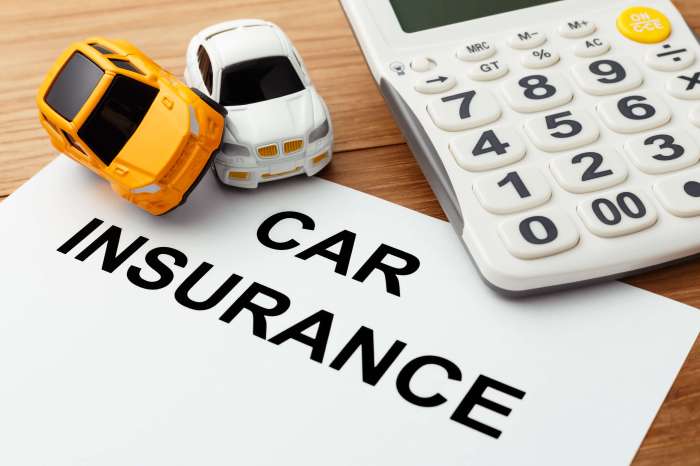Securing the right auto insurance in Virginia can feel like navigating a complex maze. Understanding the state’s specific requirements, the factors influencing your premiums, and the options available is crucial for both responsible driving and financial protection. This guide unravels the intricacies of Virginia auto insurance, empowering you to make informed decisions and find the best coverage for your needs.
From understanding the minimum liability coverage mandated by Virginia law to exploring strategies for securing affordable premiums and navigating the claims process, we’ll cover all the essential aspects of auto insurance in the Commonwealth. We’ll also delve into specialized areas like uninsured/underinsured motorist coverage and the requirements for high-risk drivers, ensuring a comprehensive understanding of this vital aspect of car ownership in Virginia.
Virginia Auto Insurance Requirements

Driving in Virginia requires adhering to the state’s mandatory auto insurance laws. Understanding these requirements is crucial for all drivers to ensure legal compliance and financial protection in case of accidents. Failure to comply can result in significant penalties.
Minimum Liability Insurance Coverage
Virginia law mandates a minimum liability insurance coverage of 25/50/20. This means drivers must carry at least $25,000 in bodily injury liability coverage per person injured in an accident, $50,000 in total bodily injury liability coverage per accident, and $20,000 in property damage liability coverage. This coverage protects others if you cause an accident. It does not cover your own vehicle or medical expenses.
Penalties for Driving Without Insurance
Driving in Virginia without the minimum required insurance is illegal. Penalties can be severe and include fines, license suspension, and even vehicle impoundment. The exact penalties can vary depending on the circumstances and the number of offenses. For example, a first-time offense might result in a fine and a requirement to obtain insurance, while subsequent offenses could lead to more substantial penalties. Furthermore, if you are involved in an accident without insurance, you could face significant financial liability for the damages you caused.
Types of Auto Insurance Coverage
Several types of auto insurance coverage are available beyond the minimum liability requirements. These optional coverages provide additional protection and financial security for various situations.
Examples of Beneficial Coverage Types
- Uninsured/Underinsured Motorist Coverage: This protects you if you’re involved in an accident with an uninsured or underinsured driver. For example, if an uninsured driver causes an accident resulting in significant medical bills and vehicle damage, this coverage would help cover your expenses.
- Collision Coverage: This covers damage to your vehicle in an accident, regardless of fault. If you’re involved in a collision, even if you are at fault, collision coverage will pay for the repairs or replacement of your vehicle, subject to your deductible.
- Comprehensive Coverage: This protects your vehicle from damage caused by events other than collisions, such as theft, vandalism, fire, or hail. For instance, if your car is stolen or damaged by a falling tree, comprehensive coverage would help with the repairs or replacement costs.
- Personal Injury Protection (PIP): This coverage pays for your medical bills and lost wages, regardless of fault. This is particularly beneficial if you’re injured in an accident, even if the accident was your fault. It can cover medical expenses, lost income, and other related costs.
Factors Affecting Auto Insurance Rates in VA

Several key factors influence the cost of auto insurance in Virginia. Understanding these elements can help drivers make informed decisions and potentially lower their premiums. These factors interact in complex ways, so a change in one area can significantly affect your overall rate.
Age and Driving Experience
Insurance companies consider age a significant factor because younger drivers statistically have higher accident rates. Teenagers and young adults typically pay higher premiums due to their inexperience and higher risk profile. As drivers gain experience and reach their mid-twenties and beyond, their premiums generally decrease, reflecting a lower likelihood of accidents. For example, a 16-year-old driver can expect to pay considerably more than a 35-year-old driver with a clean driving record, even if they drive the same vehicle. This is because insurance companies use statistical data to assess risk, and the data clearly shows a correlation between age and accident frequency.
Credit Score Impact on Insurance Rates
In Virginia, as in many other states, your credit score can significantly influence your auto insurance premium. Insurers often use credit-based insurance scores to assess risk. A higher credit score generally translates to lower premiums, while a lower score can lead to higher premiums. The reasoning behind this is that individuals with good credit history tend to exhibit responsible financial behavior, which insurers associate with a lower risk of filing claims. This is a controversial practice, but it is legally permissible in Virginia. For instance, a driver with an excellent credit score might receive a discount of 10-20% or more compared to a driver with a poor credit score, all other factors being equal.
Vehicle Type
The type of vehicle you drive is another crucial factor determining your insurance rates. Generally, sports cars and high-performance vehicles are more expensive to insure than sedans or smaller vehicles. This is because these vehicles are often more expensive to repair and replace, and they are statistically involved in more accidents. The cost of parts, the likelihood of theft, and the potential for higher repair bills all contribute to higher insurance premiums for more expensive or high-performance cars. A driver insuring a luxury SUV will typically pay more than a driver insuring a compact car.
Location
Your geographic location in Virginia impacts your insurance rates. Areas with higher crime rates, more traffic congestion, and a greater frequency of accidents generally have higher insurance premiums. Insurance companies consider the risk profile of different zip codes when setting rates. Living in a densely populated urban area might result in higher premiums compared to living in a rural area with lower accident rates. This is due to increased chances of collisions and property damage in higher-density areas.
Driving Record
Your driving history significantly influences your auto insurance rates. Accidents and traffic violations, such as speeding tickets or DUIs, increase your premiums. The severity of the offenses plays a role; a DUI will have a much more substantial impact than a minor speeding ticket. Multiple accidents or violations within a short period will result in even higher premiums. For example, a driver with two at-fault accidents in the past three years will likely pay substantially more than a driver with a clean driving record. Insurers track this information to assess the risk associated with insuring a particular driver.
Conclusive Thoughts

Successfully navigating the world of Virginia auto insurance requires careful consideration of various factors, from your driving history and vehicle type to your chosen coverage levels and the insurer you select. By understanding the nuances of Virginia’s insurance regulations and employing smart strategies for comparison and negotiation, you can secure affordable and comprehensive protection that meets your individual needs. Remember, proactive planning and informed decision-making are key to ensuring you have the right coverage when you need it most.
Q&A
What happens if I get into an accident and don’t have insurance?
Driving without the minimum required insurance in Virginia results in significant penalties, including license suspension, fines, and potential legal repercussions. You’ll be held financially responsible for any damages or injuries caused.
Can I bundle my home and auto insurance for a discount?
Yes, many insurance companies offer discounts for bundling home and auto insurance. This is a common strategy to save money on premiums.
How often can I expect my insurance rates to change?
Insurance rates can change annually, or even more frequently, based on factors such as driving record, claims history, and changes in risk assessment by the insurance company.
What is the difference between liability and collision coverage?
Liability coverage pays for damages you cause to others, while collision coverage pays for damage to your own vehicle, regardless of fault.